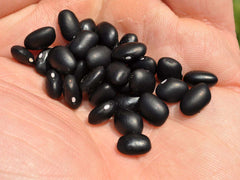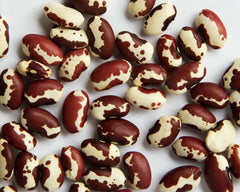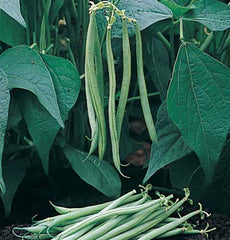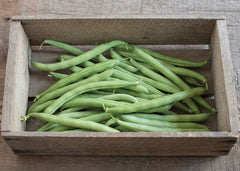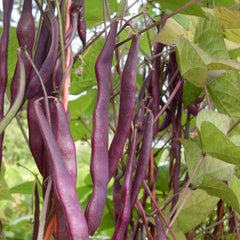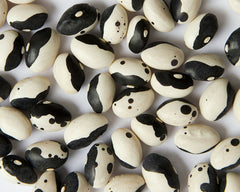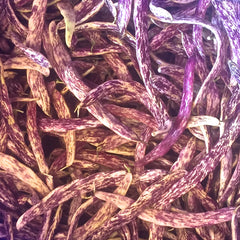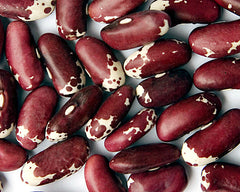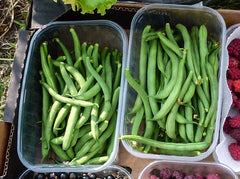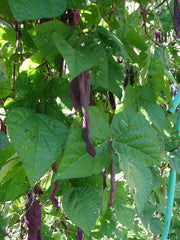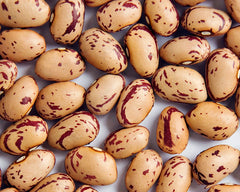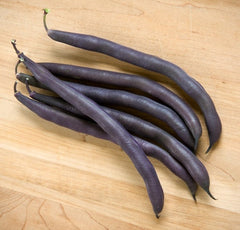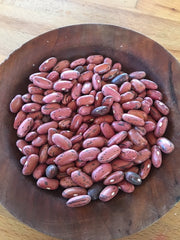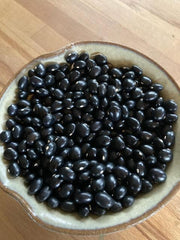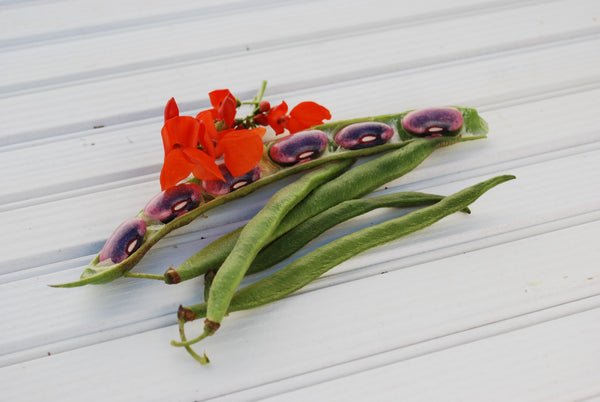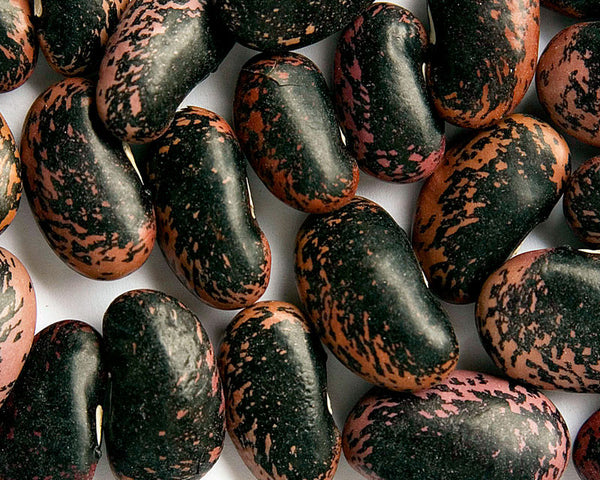Scarlet
Phaseolus coccineus
HOW TO GROW RUNNER BEAN
Pre-soak beans for 12 hours. Start indoors 4–6 weeks before last frost. Can be direct sown in late spring though it may not ripen its seed in a cool summer. Beans are sensitive to cool soil and will rot if soil temps are below 55˚F. Requires a warm sheltered sunny position in a rich well-drained soil with plenty of moisture in the growing season. Dislikes heavy, wet or acid soils. Beans are susceptible to numerous diseases, avoid wetting foliage, remove plants at the end of the year. Plants are perennials but are often grown as annuals in the temperate zone. Plants flower under long day conditions, which is ideal for temperate regions. When grown for edible pods, harvest regularly to promote more flowers. Soil pH 6.6–7.5. Hardiness zones 9–11. Perennial.
Days from maturity calculated from the date of seeding. Average 30 seeds per ounce. Federal germination standard: 75%. Isolation distance for seed saving: 1/2 mile.
Planting Depth 1-2”
Soil Temp. Germ. 70-95˚F
Days to Germ. 10
Plant Spacing 6–9”
Row Spacing 4’
Days To Maturity 61–70
Full Sun, Moist Well Drained
Days from maturity calculated from the date of seeding. Average 30 seeds per ounce. Federal germination standard: 75%. Isolation distance for seed saving: 1/2 mile.
Planting Depth 1-2”
Soil Temp. Germ. 70-95˚F
Days to Germ. 10
Plant Spacing 6–9”
Row Spacing 4’
Days To Maturity 61–70
Full Sun, Moist Well Drained
Scarlet Seed Count
.25 Pound ≈ 118 seeds
- 30 Seeds$4.10
- 1/4 Pound$12.50
An American heirloom cultivated in the 1750's, Scarlet Runner is named after the plant’s glowing red flowers. The dried beans stand out with their purple and black mottled coloration. The fresh runner bean has a dense texture and nutty flavor that is delicious with butter, garlic and fresh herbs. This variety is com...
An American heirloom cultivated in the 1750's, Scarlet Runner is named after the plant’s glowing red flowers. The dried beans stand out with their purple and black mottled coloration. The fresh runner bean has a dense texture and nutty flavor that is delicious with butter, garlic and fresh herbs. This variety is commonly cultivated in many parts of the world for its edible seeds and immature seed pods which grow to 6–8”. Tags: Type: Pole, Runner, Color: Bi-Colored, Specialty: Heat Resistant, Heritage: Heirloom, Season: Summer.
The common bean originated in the Andes. Foundation of Native American agriculture and part of the Three Sister guild: corn, beans and squash. Beans are legumes and fix nitrogen into the soil. Leaf is occasionally used as a leaf vegetable. Regarding seed born bean disease, soak seeds in 20 percent bleach solution for 15-30 minutes and dry before planting to kill exterior pathogens. Dry seed enough to shatter when banged with a hammer, then freeze for three days to kill weevil eggs. Delicious bean recipes.
Companions All: celery, corn, squash
Bush: cucumbers, strawberries
Lima: locust trees
Pole: radish
Inhibitors All: onions
Pole: kohlrabi, sunflowers
Learn More
Reviews
